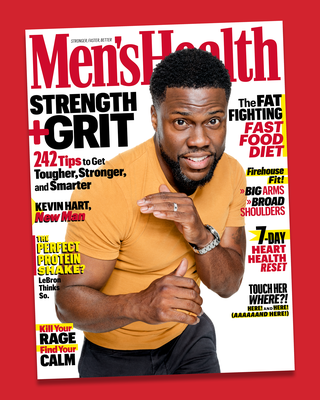This is Your Quick Training Tip, a chance to learn how to work smarter in just a few moments so you can get right to your workout.
Spend time around the weight rack, and you’re bound to hear guys boasting about their one rep max (1RM). You don’t need to be a kinesiologist to figure out that they’re talking about the maximum amount of weight they can lift once for a given exercise (typically a big, compound move such as the squat, bench, or deadlift), but knowing that number is valuable beyond mere bragging rights—it can help you fine-tune your training loads to fast-track your gains.
If you’re goal is strength and power, for example, you want to lift in the 2 to 6 rep range, which is typically 95 to 85 percent of your 1RM. For hypertrophy (8 to 12 reps per set), your sweet spot is 80 to 67 percent of your 1RM. And if you want to target your endurance-oriented type I fibers, load up with no more than 65 percent of your 1RM so you can bang out at least 15 reps per set.
If the thought of attempting a true 1RM makes you a bit nervous—and who wouldn’t be at the thought of hoisting a load that could potentially exceed the limits of your strength—you can avoid fully maxing out and reduce the chances of injury. By figuring out your 3 to 5 rep max, you can accurately estimate your 1RM much more safely.
Your Move: Grab a friend/spotter and warm up with light resistance that allows you to easily perform 10 reps of whatever exercise you’re doing (note: max-rep testing generally works best with compound moves, such as those mentioned above). Rest for one minute, and then follow these steps.
Once you know your 1RM, you can use that same chart to figure out the load you should use for a prescribed rep range, or you can just work from the percentages mentioned above.
Either way, you’ll eliminate a lot of guesswork from selecting weights. But remember, these estimates are just that—estimates. You might still have to adjust up or down slightly for a given rep range to find your ideal load. Ultimately, you want to use a weight that challenges you to complete all of your reps and sets with good form.

Men’s Health Subscription
SHOP NOW
Source: Read Full Article
